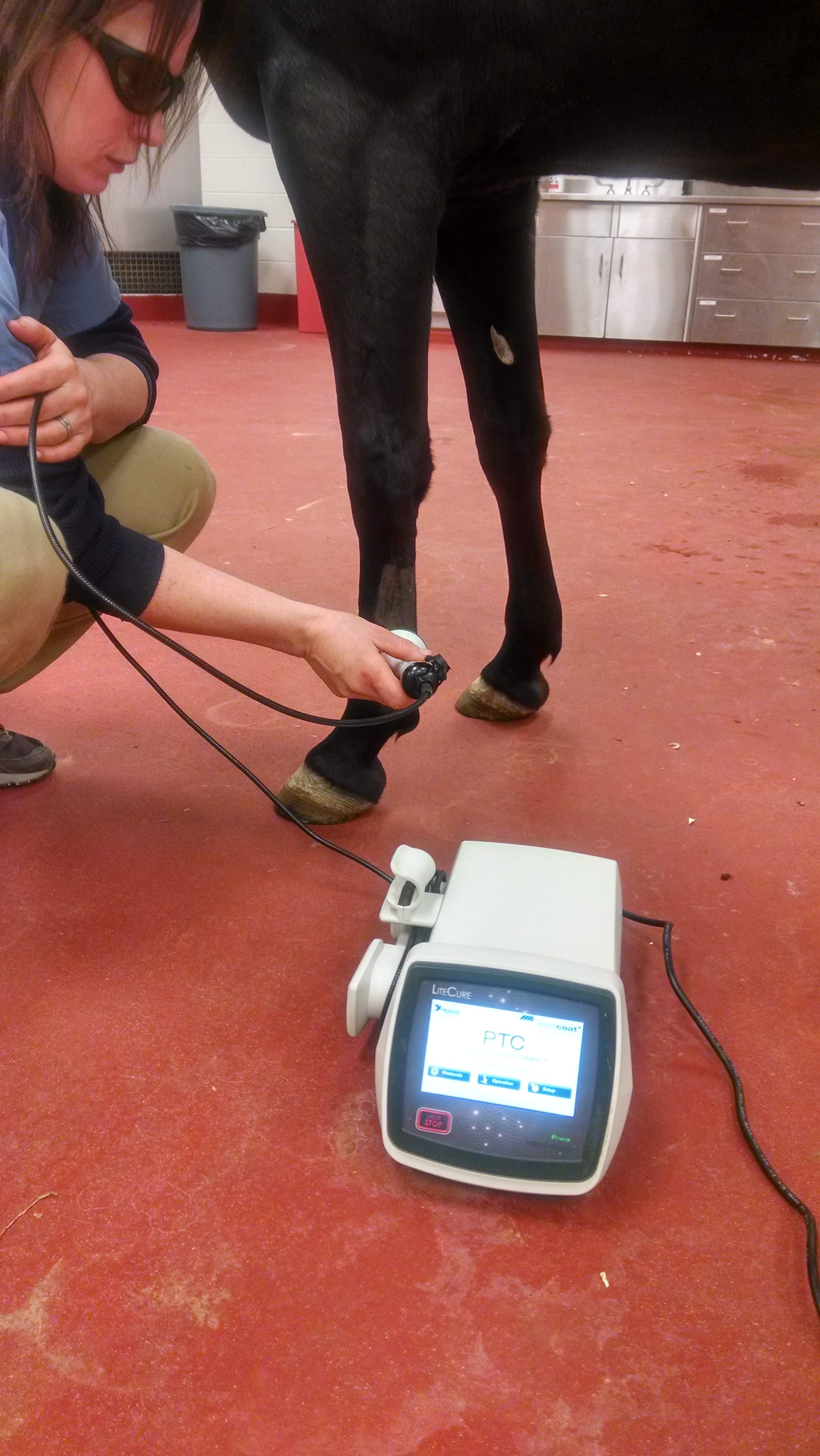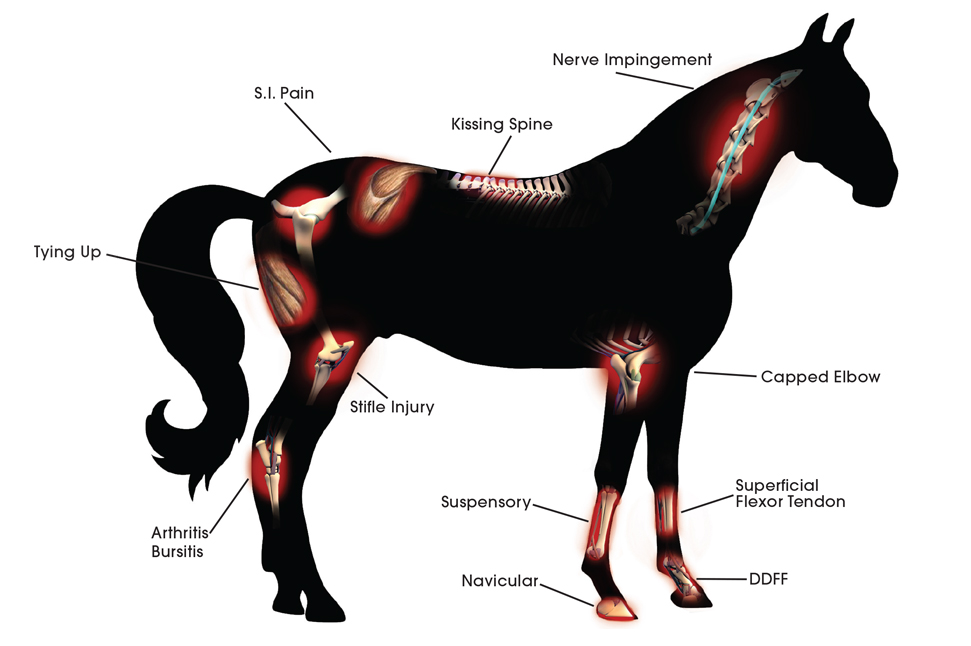Equine Therapy for Trauma Healing: How Equines Aid Heal Emotional Wounds
Equine Therapy for Trauma Healing: How Equines Aid Heal Emotional Wounds
Blog Article
Just How Laser Treatment in Equine Therapy Is Revolutionizing Vet Treatment for Steeds
Laser treatment has actually arised as a transformative strategy in equine veterinary care, offering a non-invasive solution that quickens recovery and enhances general health. The mobility and convenience of laser therapy gadgets additionally highlight their expanding indispensability among veterinarians.

Understanding Laser Treatment
Recognizing laser treatment is important for valuing its role in equine therapy. Laser therapy, additionally called photobiomodulation, includes the application of certain wavelengths of light to tissues, which can result in numerous biological impacts. This healing modality uses the power of light power to pass through the skin and underlying tissues, boosting mobile processes and improving cells repair work.
The technology behind laser treatment is based in the principle of photochemistry, where photons are absorbed by chromophores within cells, leading to raised ATP manufacturing and inflection of reactive oxygen types. This, in turn, advertises mobile spreading, reduces inflammation, and increases healing. Vet experts make use of various kinds of lasers, including low-level lasers (LLLT) and high-power Class IV lasers, depending upon the specific therapeutic objectives and the nature of the equine condition being dealt with.
Various laser wavelengths and power setups are thoroughly chosen to target various tissue depths and accomplish preferred medical outcomes. Safety protocols are critical, as improper use can result in thermal damages or suboptimal therapeutic results. Therefore, an extensive understanding of laser treatment's devices and applications is vital for its effective implementation in equine vet practice.
Advantages for Horse Health And Wellness
The myriad advantages of laser therapy for equine wellness include enhanced healing, pain reduction, and enhanced movement. This advanced treatment method leverages details wavelengths of light to pass through tissues, promoting cellular function and promoting rapid cells repair service. The non-invasive nature of laser therapy makes certain very little stress and pain for the horse, assisting in a smoother recuperation process.

By reducing swelling and discomfort, and improving tissue fixing, laser therapy assists in restoring joint function and muscular tissue adaptability. Hence, laser therapy stands as a transformative tool in modern-day horse veterinary treatment.
Usual Problems Dealt With
Laser therapy has actually arised as a versatile treatment option for a selection of usual equine conditions. Among these, bone and joint injuries are particularly amenable to laser therapy. Soft cells injuries, such as tendonitis and ligament pressures, benefit from the anti-inflammatory and analgesic impacts of laser treatments, which increase recovery and lower discomfort. In addition, laser therapy is efficient for conditions like osteoarthritis, where it assists mitigate joint swelling and advertise tissue repair service.
Wound administration is another location where laser therapy has actually shown substantial assurance. Persistent wounds or slow-healing abscess can be specifically difficult in equines, yet laser treatment improves mobile regrowth and improves blood circulation, thus speeding up the healing procedure. Laser therapies have been effectively utilized in taking care of hoof conditions such as laminitis and abscesses, minimizing pain and promoting quicker recuperation.
Horse professional athletes usually deal with performance-related issues like muscular tissue pain and anxiety cracks. Laser therapy aids in minimizing muscle exhaustion and expedites the healing Discover More of micro-injuries, hence guaranteeing that equines return to come to a head efficiency a lot more promptly. By addressing these diverse problems, laser treatment is transforming the landscape of veterinary care, giving a non-invasive, reliable choice to traditional treatments.
Modern Technology Behind Laser Therapy

Laser gadgets used in vet medication frequently utilize low-level laser therapy (LLLT) or cold laser therapy. Unlike high-powered medical lasers, these tools run at reduced energy degrees, enhancing restorative advantages while reducing thermal damage. The power from the laser light boosts adenosine triphosphate (ATP) production, enhances cellular metabolic rate, and accelerates tissue fixing processes.
Modern laser treatment equipment for equine treatment is made with flexible setups to accommodate the specific needs of various cells and problems. Equine Therapy. Criteria such as wavelength, power density, and therapy period can be carefully tuned, using customized restorative options. Furthermore, developments in laser technology have brought about the advancement of portable, handheld tools, making it easier for veterinarians to supply therapy in a variety of settings, from facilities to stables. This technological technology is a keystone in the revolutionizing of equine vet treatment.
Success Stories and Study
Showcasing the tangible benefits of laser treatment, numerous success stories and situation studies brighten its transformative influence on equine health. One such instance entails a pure-blooded racehorse struggling with chronic tendonitis. Traditional therapies produced marginal enhancement, yet after integrating laser therapy right into the routine, the horse showed considerable reductions in swelling and discomfort within weeks, inevitably returning to competitive racing.
An additional compelling instance includes a dressage equine diagnosed with extreme back pain, limiting its efficiency. A vet group employed low-level laser treatment (LLLT) to target the swollen areas, resulting in significant improvement in flexibility and a noteworthy decline in discomfort. Over a number of sessions, the horse reclaimed its peak form, showcasing the effectiveness of laser treatment in attending to this article musculoskeletal issues.
Additionally, a research conducted at a leading equine center checked out 50 equines with different soft tissue injuries treated with laser therapy. The results were striking: 85% of the equines showed increased healing times and boosted mobility. These instances emphasize the adaptability and performance of laser treatment in equine medicine, using a non-invasive, scientifically-backed method to boosting healing and performance in steeds.
Final Thought
Laser treatment is changing equine veterinary treatment by offering a non-invasive therapy that increases healing, minimizes inflammation, and eases pain. With its effectiveness in dealing with a variety of problems, from musculoskeletal injuries to persistent ailments like osteo arthritis, this modern technology considerably enhances equine health and movement. The transportability and adaptability of laser therapy further highlight its transformative impact on vet methods, strengthening its duty as a vital device in contemporary equine medical care.
Report this page